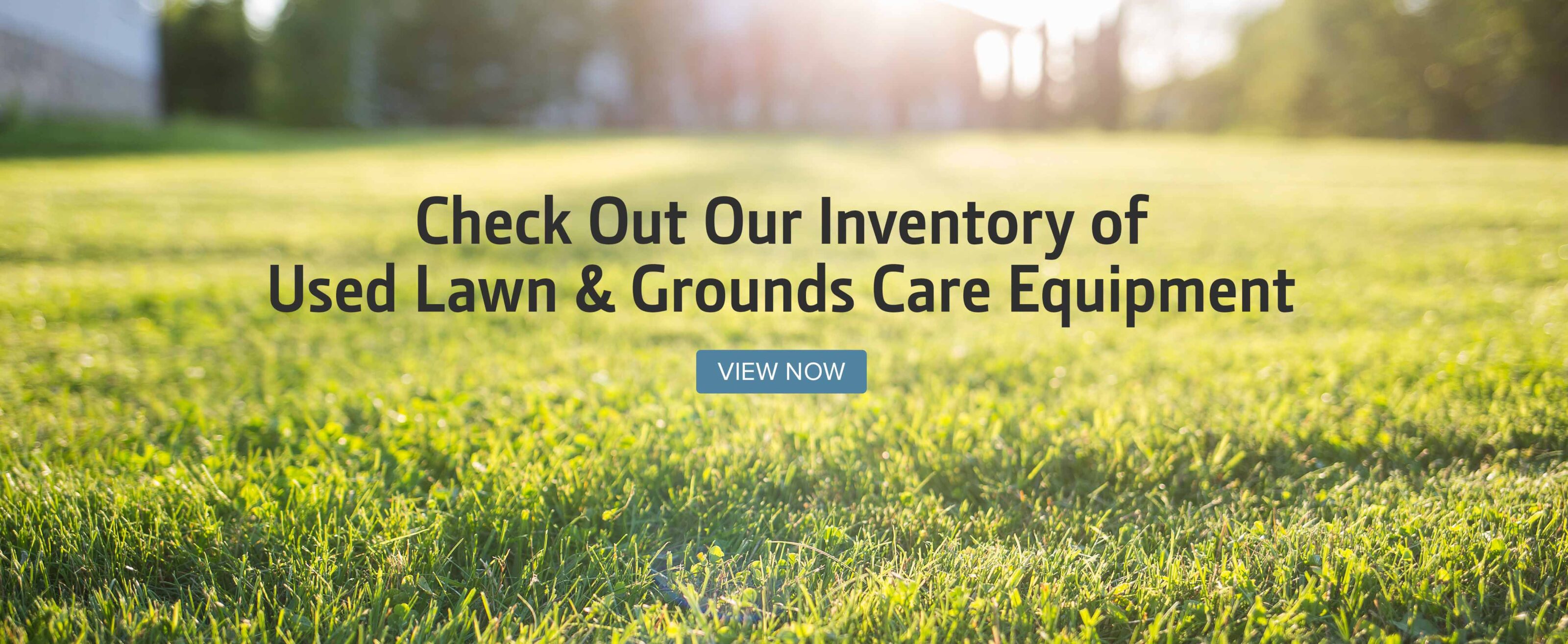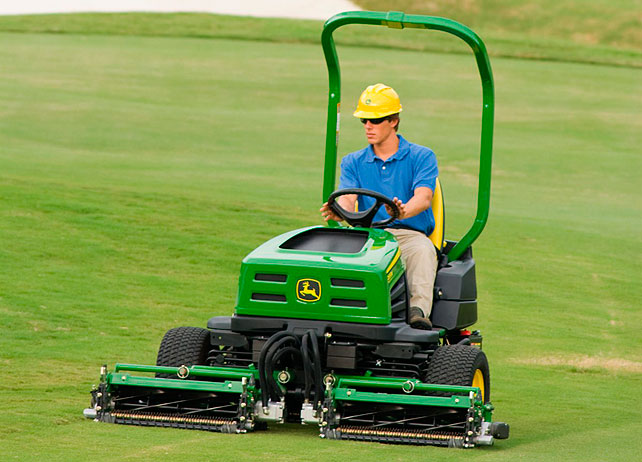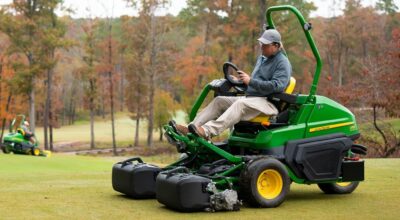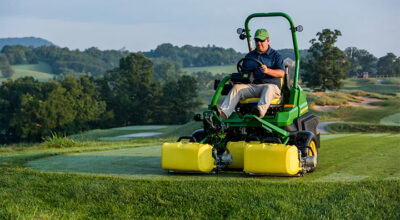Here, we will cover the location and use of the controls, proper mowing techniques, daily maintenance and extremely important safety information. These are all essential things that you should understand before operating the mower, so be sure to watch the video once or twice before jumping into it.
We’ve also broken down the key takeaways from this video in the content to follow. Enjoy!
What Are the Features of the John Deere 2653B?
There are many different features to the 2653B mower, making it a very versatile piece of mowing equipment. Let’s take a look at these features.
3WD
The 2653B John Deere mower has a full-time 3WD hydrostatic system which directs oil flow to the wheels in order to create traction in tough terrain. This means that if operators get into a situation where a wheel starts to slip, the system supplies fluids to the other wheels – providing traction power. This system provides hill-climbing power without a weight-transfer system.
Design & Ease of Service
Combined into one-piece, the air plenum and hood are simply designed. Turn the hood latch and then raise it up in order to gain service access to:
- The air restriction indicator
- Engine oil dipstick
- Backlapping valve
- Hydraulic components
- Coolant level fill
Frame Design
Since the model has a low center of gravity as well as a wide, 55-in. wheelbase, it ensures a comfortable and safe operation, even when there are adverse mowing conditions.
Diesel Engine
The 2653B John Deere Mower has a smooth, efficient, and quiet operation due to its 3-cylinder engine. That, in combination with the fuel tank, gives the operator plenty of power and fuel for the most productive mowing possible.
Durable Frame
This model of mower can improve the appearance on golf courses and many other large areas of turf. The frame of this mower is designed so that it provides excellent weight distribution and durability. The frame’s design allows for a low center of gravity but also provides excellent visibility.
Air Restriction Indicator
An air-restriction indicator has a sight glass with markings. This indicator shows if service is required to the air cleaner. When the indicator begins to show red, airflow restriction in the system has to be addressed immediately.

Before Operating the John Deere 2653B
To properly operate and maintain your John Deere 2653B Mower, there are a few things you should keep in mind. Here, we’ve put together a brief overview of some essential considerations.
Safety
This should be the first thing you think of when operating any piece of machinery. It’s important to remember that you’re not only responsible for your own safety, but you’re also responsible for the safety of those around you. Of course, you should understand the basics like always wearing your seatbelt on the golf course; however, you must read the operator’s manual completely before operating.
Location and Use of the Controls
Learn the different controls that you’ll find on the left and right side of the console. This is essential to finding exactly what you need and operating the machine, as well as being able to understand what’s going on during your operations and how to improve it. Check out the video above for complete details.
Proper Clothing
The best way to prevent any injuries or risk is wearing the proper clothing required for the job. This includes work shoes, long pants, safety glasses with side shields, and hearing protection. You may even want to consider wearing work gloves, a long sleeve shirt, and sunscreen.
Pre-Start Checks
There are certain elements that you should check during a walk around inspection before mowing. This includes looking at the hardware to make sure it’s tight and checking guards and shields to ensure they are in place and in good condition. Look under the machine for oil, fuel or coolant leaks, make sure all safety signs are readable, check the tire pressure, etc. Watch the video for all the details.
Starting the Engine and Mowing
In order to get your operations up and running, there are several elements that you need to have in place. The video above will walk you through essential steps and training that will help ensure you are starting your engine and mowing operations while following Deere best practices.
Key Techniques
Understanding certain techniques will help you gain control over your equipment. For example, the risk of rollover is low when operating on slopes of 15 degrees or less; however, the risk increases as the slope angle increases. While the operator’s manual provides more details, this video is a good place to start.
End of Day Maintenance
After a day of mowing, there is some simple maintenance that should be done to preserve your machine. This includes things like cleaning the radiator, blowing away any debris that has collected on the machine and using low-pressure water to rinse the machine and cutting units.




